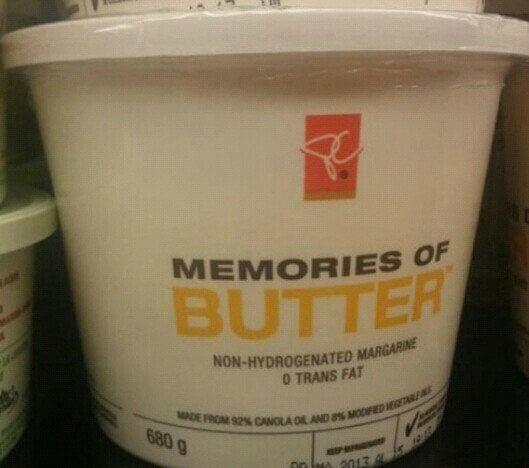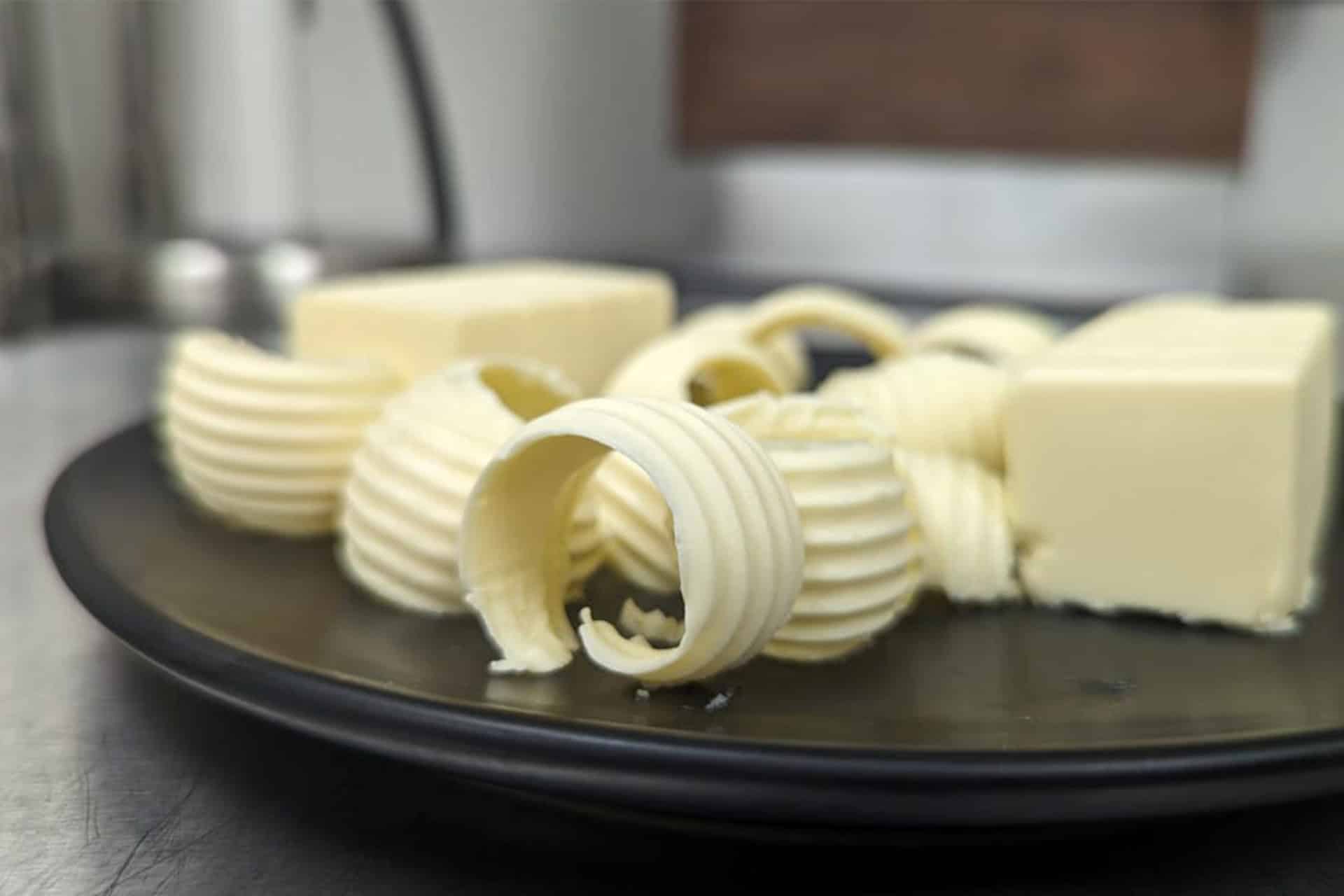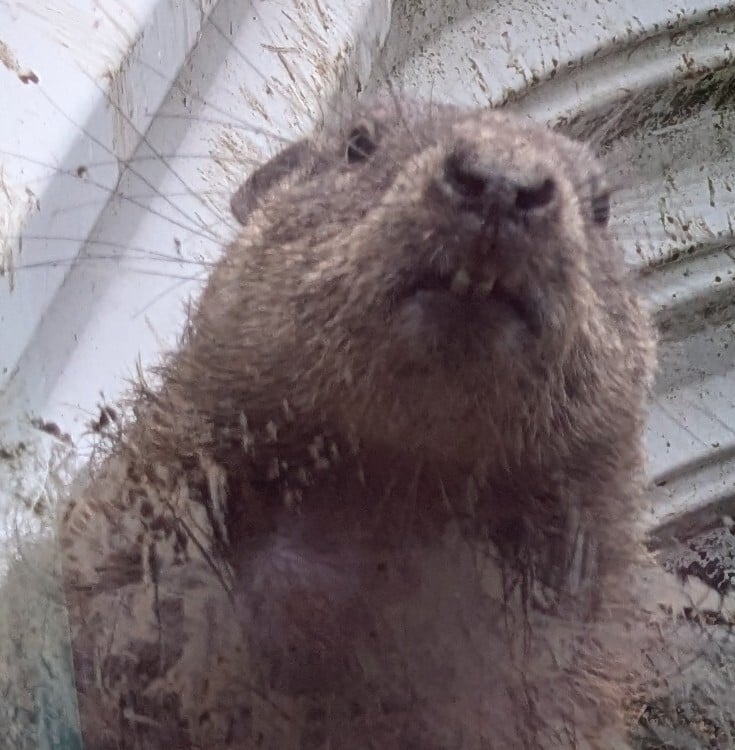A California-based startup called Savor has figured out a unique way to make a butter alternative that doesn’t involve livestock, plants, or even displacing land. Their butter is produced from synthetic fat made using carbon dioxide and hydrogen, and the best part is —- it tastes just like regular butter.
Sounds like margarine with more chances to shit myself
Margarine is made of hydrogenated oil. This is chemically identical to the fatty acids in butter. It’s not an alternative for dietary purposes, it’s just a more planet friendly solution.
What about the trans fat byproduct from margarine production?
I see you didn’t read the article
I think it’s closer to the coal butter synthesis but maybe they found a more efficient method using other carbon sources
Carbo-LEO.
“You see, we take all that bad stuff we learned from Oleo pantshitting technology, and then we move it around. Now we have ‘Carbo-LEO’'.”
Found the guy who failed high school chemistry.
Interesting way to get fat alternatives, people are already used to eating fake butter regularly, so it probably wouldn’t take much to add this to our diet.
It’s also closer to butter than butter alternatives. It’s not made to be more healthy, just more planet friendly.
The biggest question which is barely alluded to in the article is cost. If it can’t compete with mass produced butter at cost and scale then it’ll just be another “alternative” which is good but not as big.
They also mention that they compared emissions and land use but give no aspect of what synthetic processes are used (I’d assume they at least have provisional patents on the “how to” already).
Take all the subsidies out of the dairy industry and see how competitively priced butter actually is.
As if dairy fat isn’t subsidised already.
And? Whether it’s fair or not that is their competition.
Could be subsidized as a “real” carbon offset. That could make it competitive with other butters. Assuming it’s actually legit.
Yeah, that’s always the thing with these technological solutions, you practically cannot compete with plants. They involve barely any work, nor machinery, for the output they deliver.
deleted by creator
Terroir is essential to any natural food product. The impurities are what make it good, not something which detracts from the whole.

What on earth is that picture?
Canadian brand (President’s Choice) that apparently has a “memories of” product line.
Computer! Butter! Room temp!

Fat and oil production from animal and plant-based sources are collectively responsible for about 3.5 billion tons of CO2
You cannot be serious that animal-based and plant-based are grouped in this figure. Plant-based is likely close to carbon-neutral, and only not net-negative, because of transport, cooling etc., which will also be necessary for this artificially created fat…
Tilling, seeding, treating, and harvesting all require machinery and therefore increase carbon output in farming.
Plus the simple effects of land conversion. Plus the emissions from the feces.
Yeah. But since farm animals are often fed from farmed plants these days, animal-based tends to be worse by quite a solid factor. This article puts butter at 4x worse than margarine, for example: https://www.forkranger.com/blog/is-margarine-a-sustainable-alternative-for-butter/
How plant-based compares to this new process still needs to be seen for sure. If it’s just a machine you can plug in at the store and everyone can get their butter like out of an ice cream machine, without transport and cooling chain, then it’s likely a lot better.
But at this point, I don’t expect the process to be much more efficient than what plants are doing, which means you’d still need a ton of energy and particularly also land area for it.
If it tastes and spreads like a tub of Land o Lakes then I’ll probably try it. I don’t care where the hell it comes from as long as it tastes correct.
If this were to take off France and the US South by themselves could eat us out of climate change in a matter of months
Is it as bad for your health as hydrogenated oils?
Even if it is – I’m interested in seeing how it performs. Feed some rats 3-5x the recommended amount, see what happens. Have some long term studies.
If it is the same as what we use, right now, for a lessened cost or environmental impact, that is still worth exploring.
Don’t want to be a hater but doesn’t this basically create fat without nutrients? It feels like this is reinventing margarine albeit in a cool way.
They’re the same fatty acids found in butter. Margarine is hydrogenated oil.
They’re from the same class yes, but is it also going to contain vitamins A, D, E and K2 or contain fatty acids like Conjugated Linoleic Acid or Butyric acid?
I’m trying to point out that factory produced fats will most likely lose out on the health benefits of butter as a source of fatty acids.
I wonder if they can use CO2 that comes from industrial carbon capture, or if it needs to be something purer that takes a lot of energy to produce.
Also, I’m not sure if we can get industrial volumes of hydrogen from sources other than fossil fuels now. Its been a while, but last I checked it was coming from things like byproducts from reformers.
It would need to be food grade CO2. So breweries would be a good source.
finally someone did the thing everybody wanted
So this new carbon sequestering program is going to be kind of a good news / bad news thing. …
Wait. So a “butter star” is possible?
Once one is discovered, there will be a NASA mission to bake a gigantic loaf of bread and launch it at the butter star.
And Musky’ll have a tantrum trying to race a croissant at it first.
How does the cost per co2 captured compare to planting more trees? Or is this just another VC scam?
If you plant more trees, there wouldn’t be enough space for the cows to get milk and make butter.
I guess the calculation always works, even when people apply methods they use to discredit EVs










